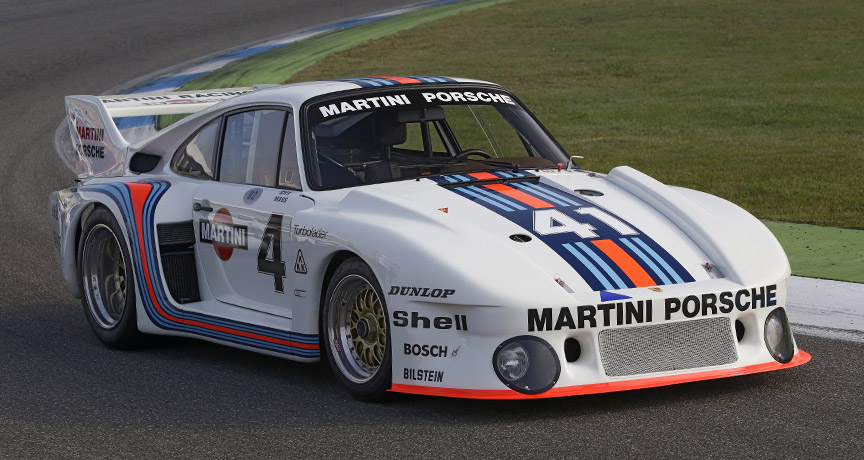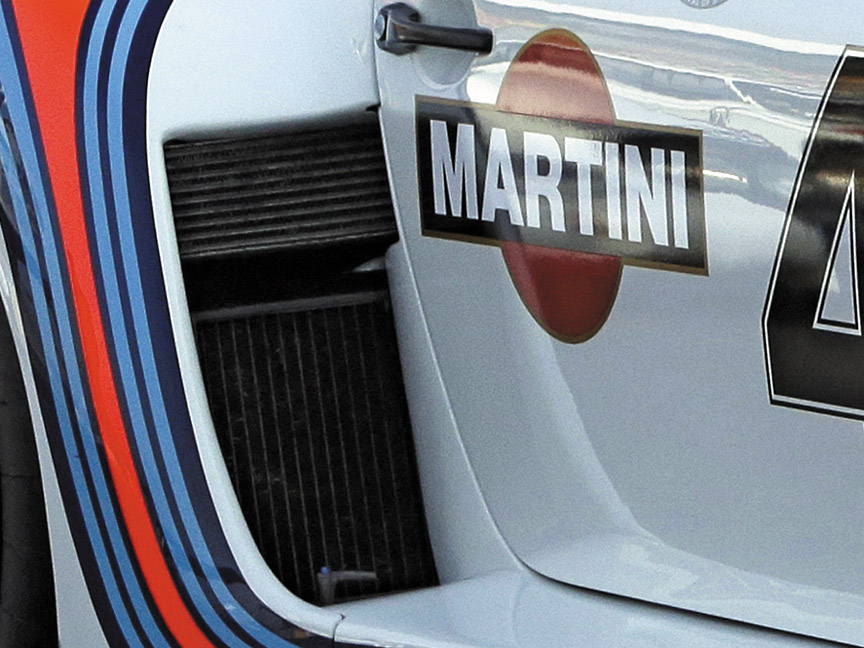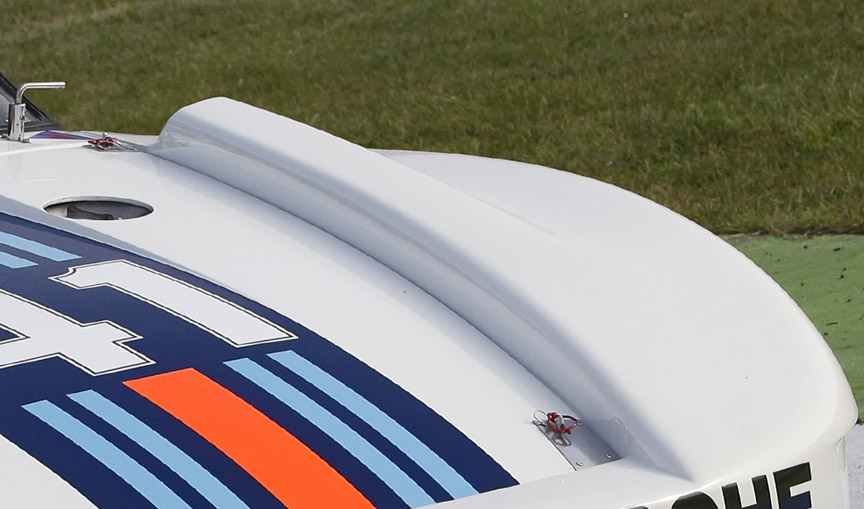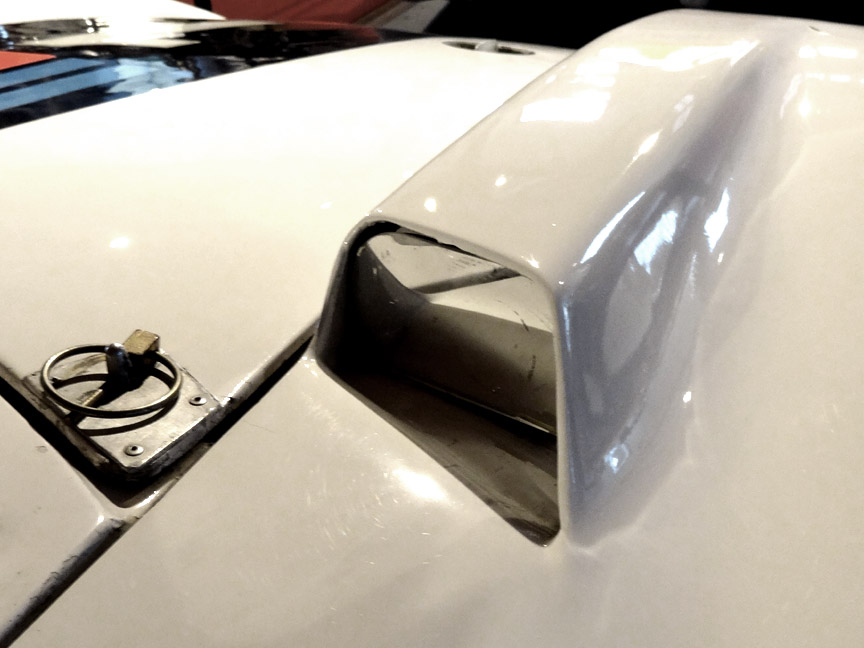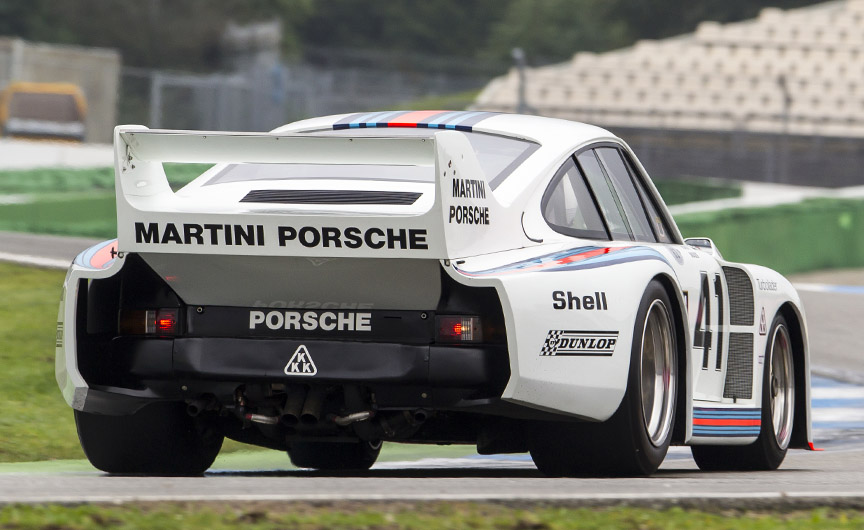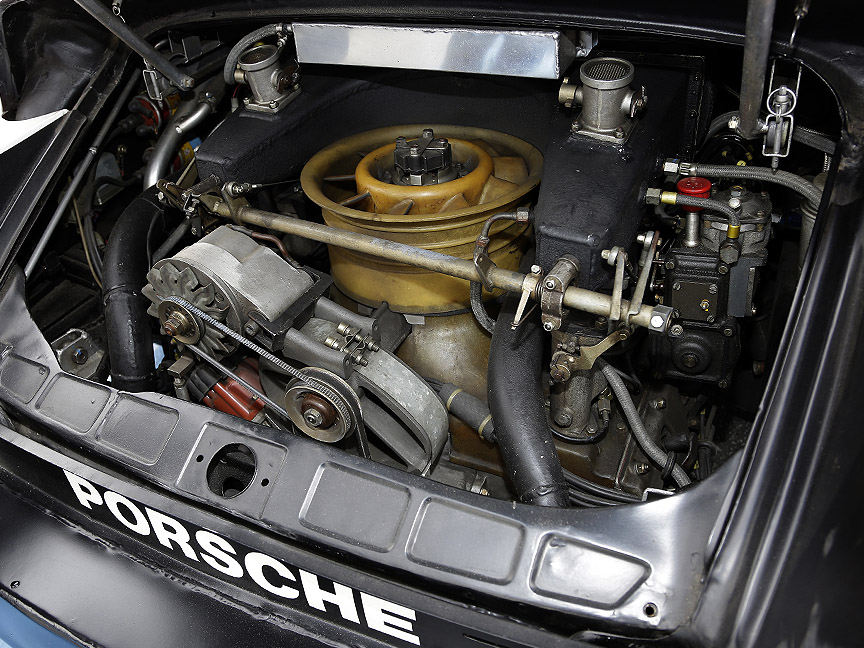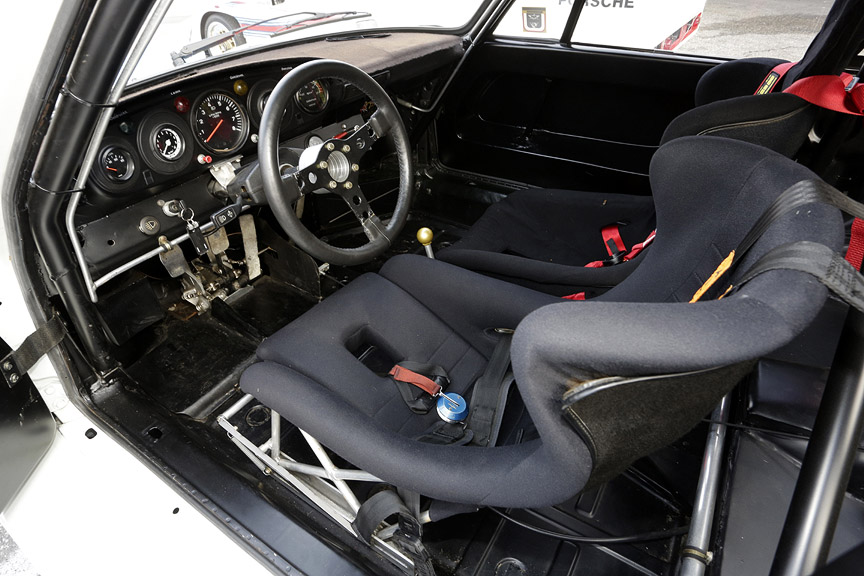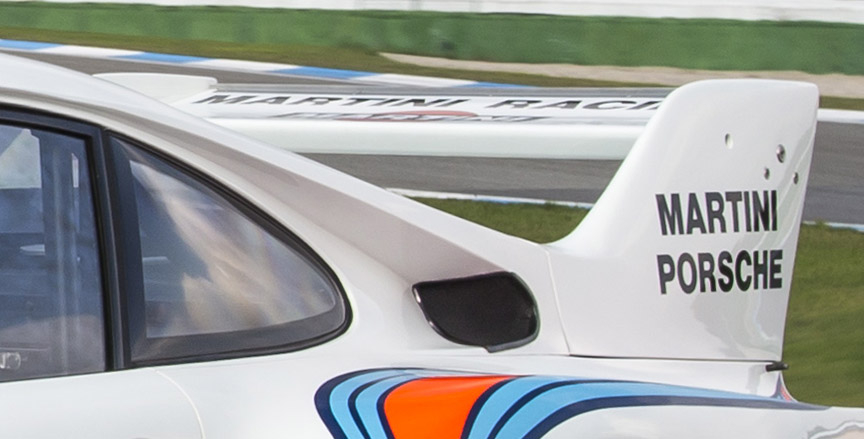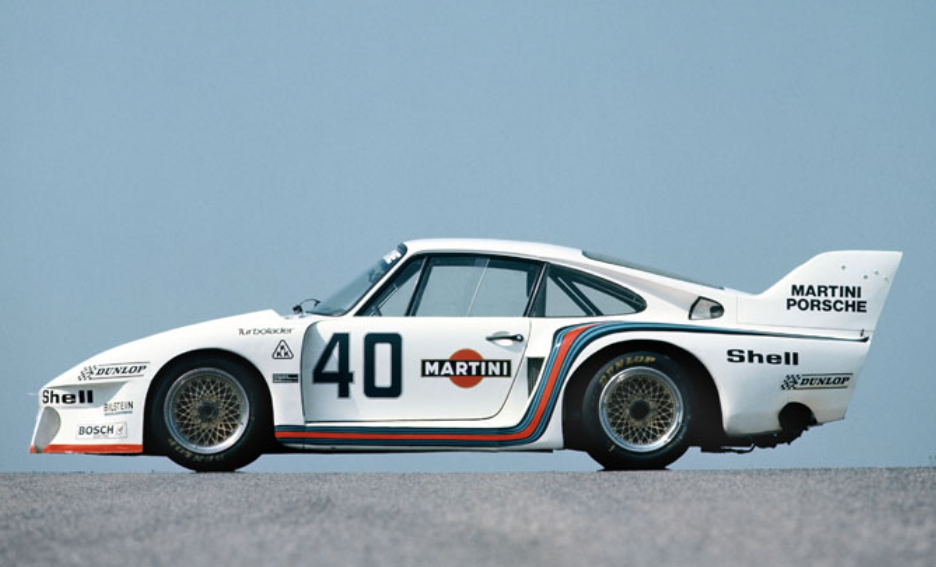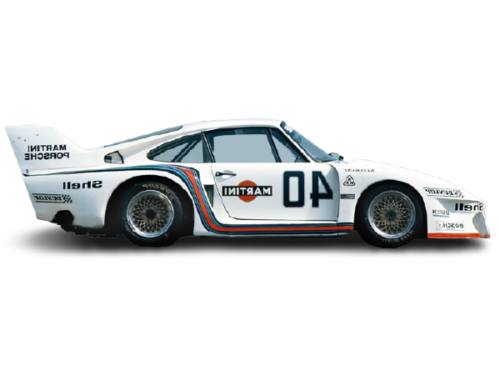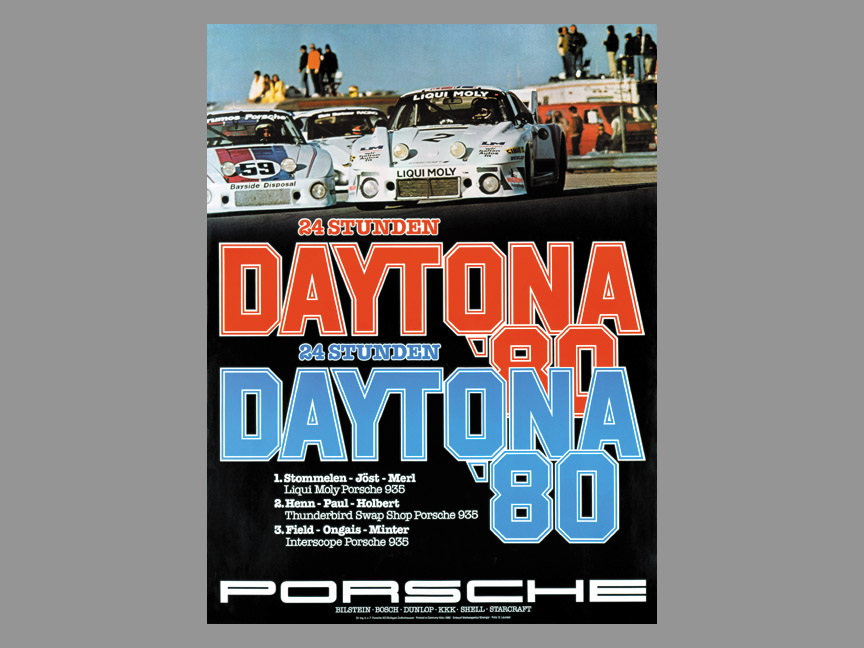Porsche 935/77 (1977)
Premiere: 1977 March 20 at Mugello 6 hours in Italy / Engine: 2.85 L Twin Turbo Flat-6 or 1.4 L Single Turbo Flat-6 (“Baby”) / Gearbox: 4-speed
IMPORTANT NOTE: This article is about the factory racing team’s 935/77, not about the 935/77A built for customers in 1977 (these were 935/76 cars in essence).
The 935/77 was a result of relaxed rules and the car got a completely new suspension. The mirrors were incorporated into the front fenders and the rear window had a new angle. The 935/77 was visually very pleasing. While the 935/76 had a single turbocharger, the 2.85-litre engine of the 935/77 had two turbochargers. The 935/77 was first shown to the public in Italy at the Mugello 6 hour race in March 1977. The first race ended in an accident when Jürgen Barth took the car back to the track after brake refreshment and had the brakes failing immediately. It was the car with chassis number 935004. Because of the extensive front-end damage, the car was not repaired.
The next time a 935/77 entered a battle, was at the Silverstone 6 hours in May 1977. There weren’t much other cars in the race than Porsches, with six 935 among them (the 935/77 plus five customer cars).
The Silverstone winning Porsche 935/77 of Jacky Ickx and Jochen Mass was followed by two customer 935 making it a 1-2-3 victory for 935. Two weeks later, at the Nürburgring 1000 km race, the same 935/77 with the same drivers scored another pole position, but an engine problem terminated the race of the Martini-Porsche. Another two weeks later, the 935005 participated at the 1977 Le Mans, but an engine problem caused an early retirement.
The third and the last 935/77, or actually the first one built, chassis 935003, saw racing action on July 3, 1977 at the Norisring Trophy where Bob Wollek scored 2nd between two customer 935.
At the Norisring, a 1.4-litre single-turbo version of the 935/77, called “Baby”, was also first used. The reason for the small engine was to fit into the 2-litre class and with the coefficient of 1.4 for turbocharged cars, it meant the maximum engine capacity could be 1.4 litres. Imagine a 1.4-litre flat-6!
The 935 “Baby” was entered only in two races. First on July 3, 1977 at Norisring and the second time on July 30, 1977 at Hockenheim. The Division II was typically crowded with BMW 320 and although these 2-litre engines had around 300 horsepower, Porsche’s 1.4-litre turbo was much more powerful.
The 935/77 with chassis number 935005 was sent to USA. Driven by Jacky Ickx and Jochen Mass, it won the 1977 Watkins Glen 6 hour race in New York state. Then, at Mosport 6 hours in Canada, the 935005 took the pole position, but didn’t finish because of an engine problem. Five weeks later the car raced in UK near London at the Brands Hatch 6 hours. It took pole position and race victory driven by Jacky Ickx and Jochen Mass.
In total, four 935/77 were made by Porsche: chassis 935003, -004, -005 and 935/2-001 (“Baby”).
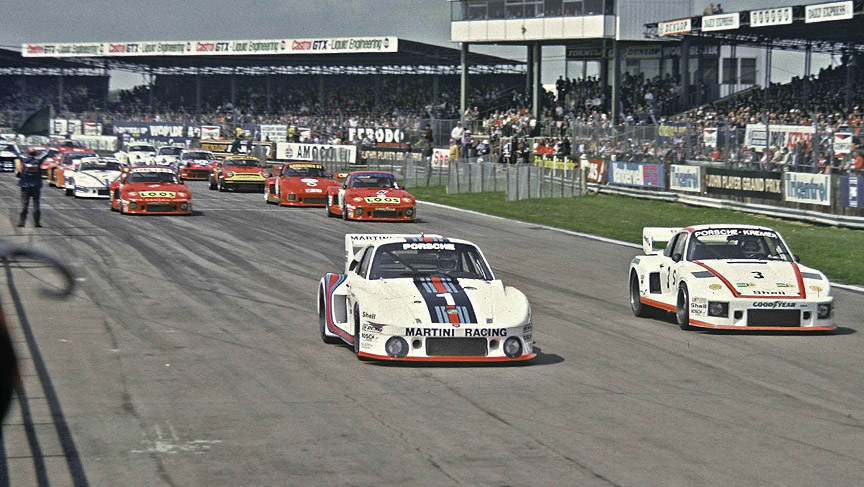
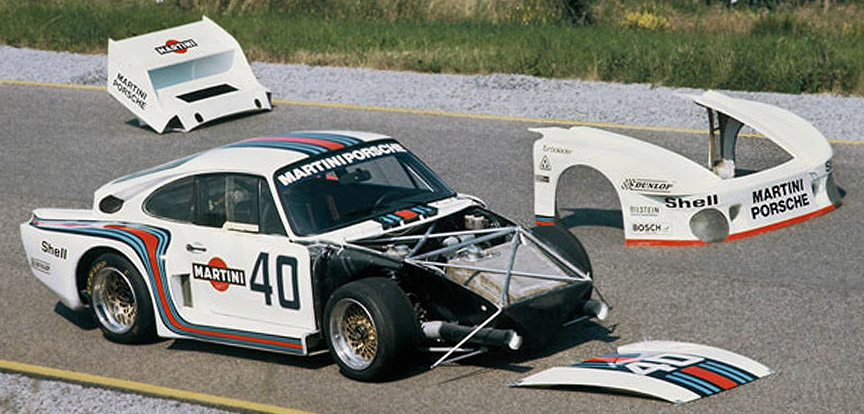
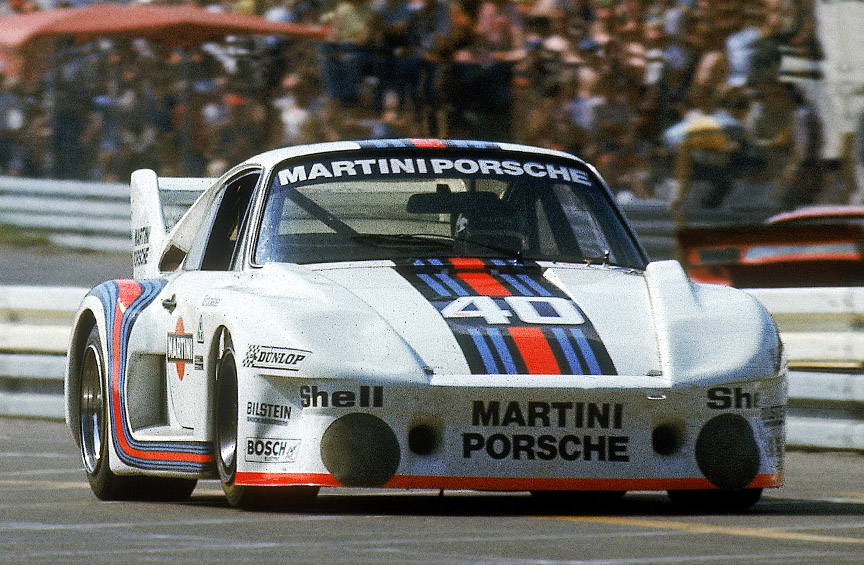
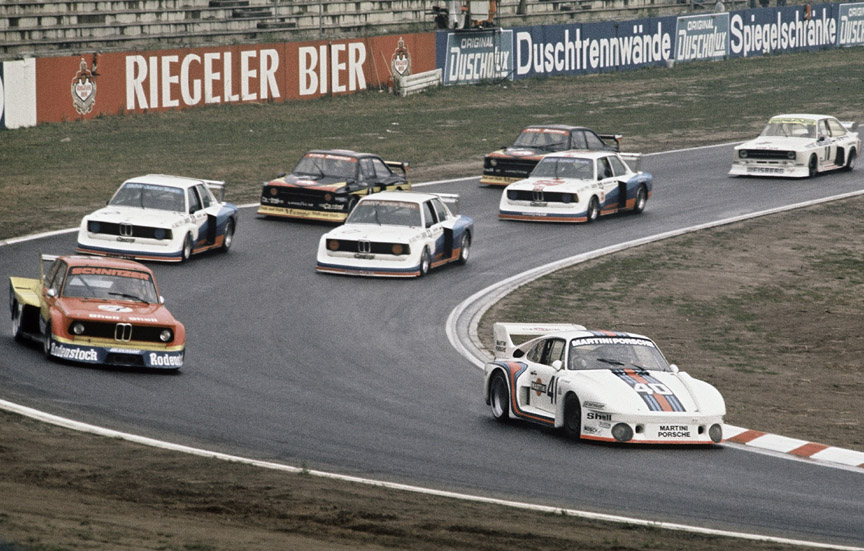
The 935 & The Bicycle Speed Record
In 1977, a professional track cyclist Jean-Claude Rude declared that he wanted to beat the bicycle speed record of 138 mph/223 km/h set in 1973. Such speed records are achieved riding a bicycle behind a fast motorcycle or a car with special wind deflector installed on its rear end. Porsche prepared a 935/77 for Rude’s record attempt.
August 23, 1978, was the day scheduled for the record ride. Jean-Claude Rude’s ambition was to achieve 240 km/h, but at 170 km/h he lost the control of the bike. The rear tyre was damaged. It is not clear if the tyre was damaged because of the rider or the control was lost because of the failing tyre. Luckily Rude didn’t fall this time (he killed himself 1.5 years later when training for a record ride beside a fast train).
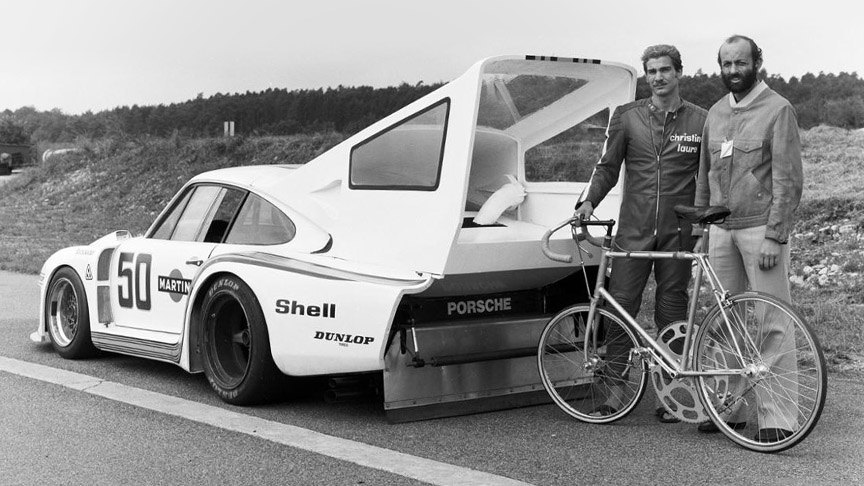
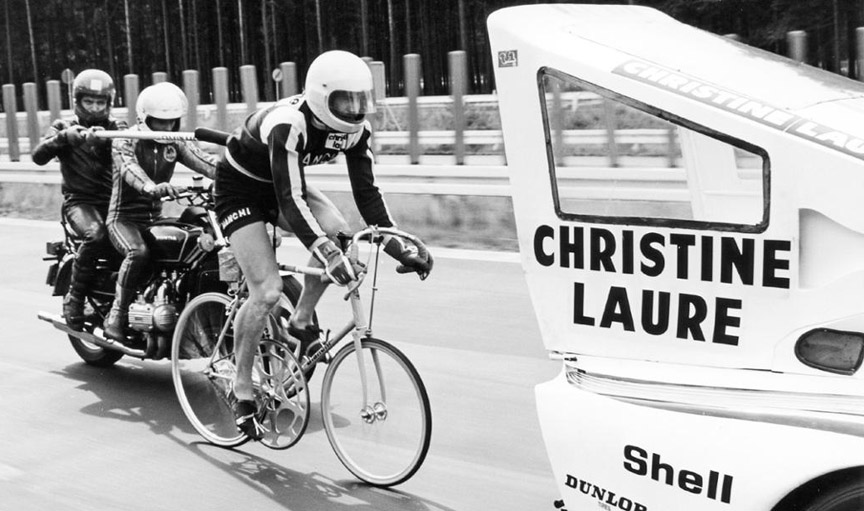
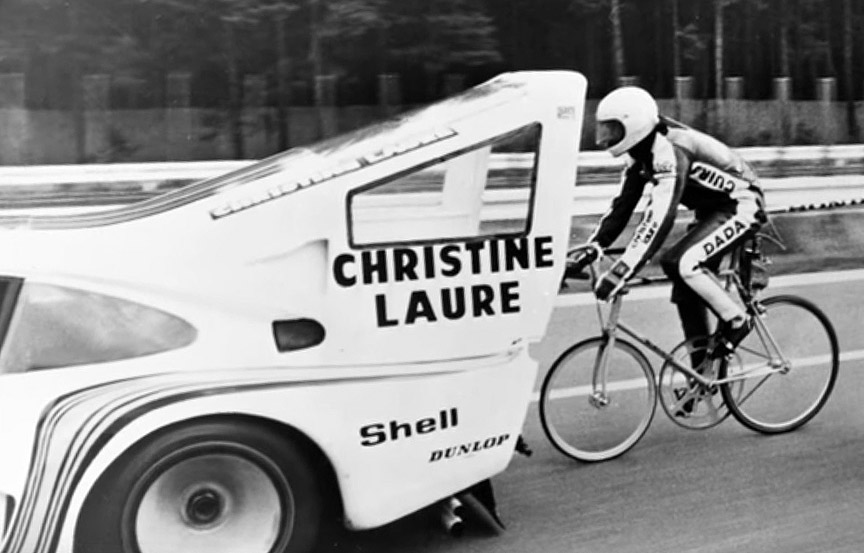
Joest Racing 935 J
In 1979, Joest Racing built four 935 J visually similar to 935/77. The first car was ready already in the summer of 1979 and won the first race, the Norisring Trophy driven by Rolf Stommelen. The greatest success came in the beginning of 1980, when a 935 J won the Daytona 24 hour race. As another success, the 1981 Silverstone 6 hours was won with 935 J driven by Walter Röhrl, Harald Grohs, Dieter Schornstein.
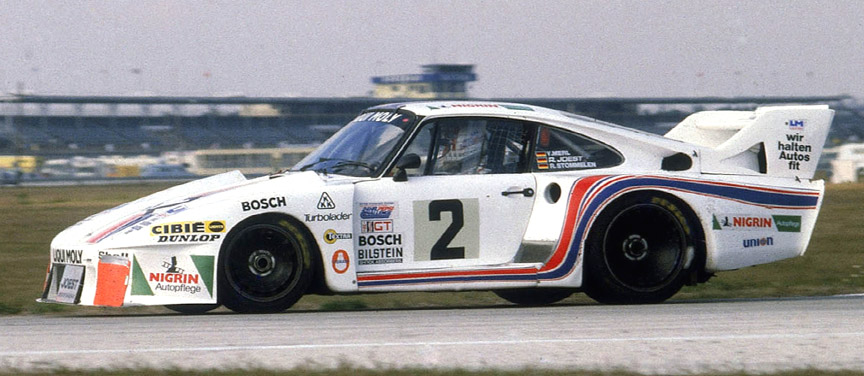
Notable Porsche 935/77 Cars
Below we include both customer and works cars that were notable and worth mentioning on their own.
Porsche 935/77A Customer
Based on the 1976 version, thirteen Porsche 935/77A were sold to privateer teams in Australia, Italy, France, the US and Germany. Among others, Cologne-based rivals Georg Loos and Kremer Racing entered 935s in the 1977 Deutsche Rennsport Meisterschaft which introduced the Group 5 rules. As the naturally aspirated BMW Coupés and Ford Capri had pulled out of the Div. I (over 2.0 litre) of the DRM, these Porsches had no serious competition in the big division until other turbo-charged cars like the BMW-powered Schnitzer, Toyota Celica and the Zakspeed Ford Capri debuted.
The DRM was a drivers’ championship, and with equal Porsche customer cars, no other competitor could dominate, which meant that despite the customer 934 of 1976 and the 935 since 1977 dominating their division, the championship was often decided in favour of a small division pilot. Kremer went on to develop yet another special 935, the K2, and also ran the optional 3.0L engine offered by Porsche, which was connected with sixty kg more minimum weight. Porsche also sold slightly modified customer cars in 1978 and 1979.
Porsche 935/77 Works
After having won both world championships in 1976, Porsche focused on Le Mans. Due to a lack of competition in 1976, Porsche decided not to defend its sportscar championship with the 936 in 1977, leaving it to the Alfa Romeo Tipo 33. The series would be demoted to a European series in 1978 before being discontinued.
In the 1977 World Championship for Makes season, the factory continued to develop and race one or two new 935, in case BMW or another brand would bring a competitive turbocharged car. Customers of the 935/77A were not happy that the factory would race them with a newer car, but as the 935/77 was often unreliable, it won only four of the nine WCM events, which did not include Le Mans.
In the WCM season opening 24 hour Daytona, the old car was entered, but tyre failures caused a DNF, with an old RSR taking the win in front of two customer 935. The new car body was changed significantly to lower drag, resulting in a 10 km/h higher top speed at Paul Ricard, where it covered 3,500 km in tests at speed, lapping three to four seconds faster. The front fenders, which in 1976 had followed the hood, now protruded above the hood line, and also accommodated mirrors. The rear fenders were altered, but the biggest change was the addition of a second rear window above the standard one. This allowed cleaner air flow to the rear wing under which the single turbo was later replaced by two KKK units. This improved throttle response and also power, but several head gasket failures meant that Porsche had some home work to do for 1978.
The works 935/77 qualified sixth at the 1977 24 Hours of Le Mans, behind the Renault Alpines and the 936s, but engine troubles ended their race early. As in 1976, a 936 won after the turbo powered sportscars chased each other into troubles. This time, a customer 935 finished third overall.
Porsche 935/2.0 ‘Baby’
The 935/77 body style was used also for winning one race in the small 2.0 litre Div. II of the DRM, to prove that Porsche could also compete in that class. In Div. I, the customer 935s raced each other, and German TV announced that at the Norisring, it would thus cover only the Div. II race. Porsche engineers were sent to the drawing boards to reduce the capacity of the air-cooled flat-six to 1,425 cc. The power output of the engine was 261 kW (355 PS; 350 hp). The weight could be lowered to 750 kg (1,650 lb) according to rules in this class. To achieve this, large parts of the chassis were replaced by a tubular aluminium space frame.
At the time, Zakspeed-Ford and Schnitzer-BMW were in transition from the naturally aspirated 2.0 L 4-cylinder engine rated at about 224 kW (305 PS; 300 hp) to 1.4 litre turbocharged engines rated at an excess of 261 kW (355 PS; 350 hp). These engines would later move on to Formula One, with the BMW powerplant winning the 1983 F1 Championship, and becoming the strongest F1 engine ever, at up to 1,118 kW (1,520 PS; 1,499 hp).
In the first outing at Norisring in early July 1977, both the new car with Jacky Ickx behind the wheel had problems due to overheating. Skipping the Diepholz airfield round, Porsche sorted the car out for the DRM support race of the 1977 German Grand Prix at the fast Hockenheimring (long version). In changing weather conditions, Jacky Ickx set pole by almost three seconds and won with 50 seconds, setting fastest lap in the process. With its mission accomplished, the Porsche 935/77 2.0 (chassis 935/2-001) was retired to the Porsche Museum.
Learn more about Porsche 935/2.0 ‘Baby’
Photos of the 935/77 2.85 L In The Porsche Museum collection
While the remains of the 004 ended up in private hands, the 003 and 005 belong to Porsche Museum collection.
